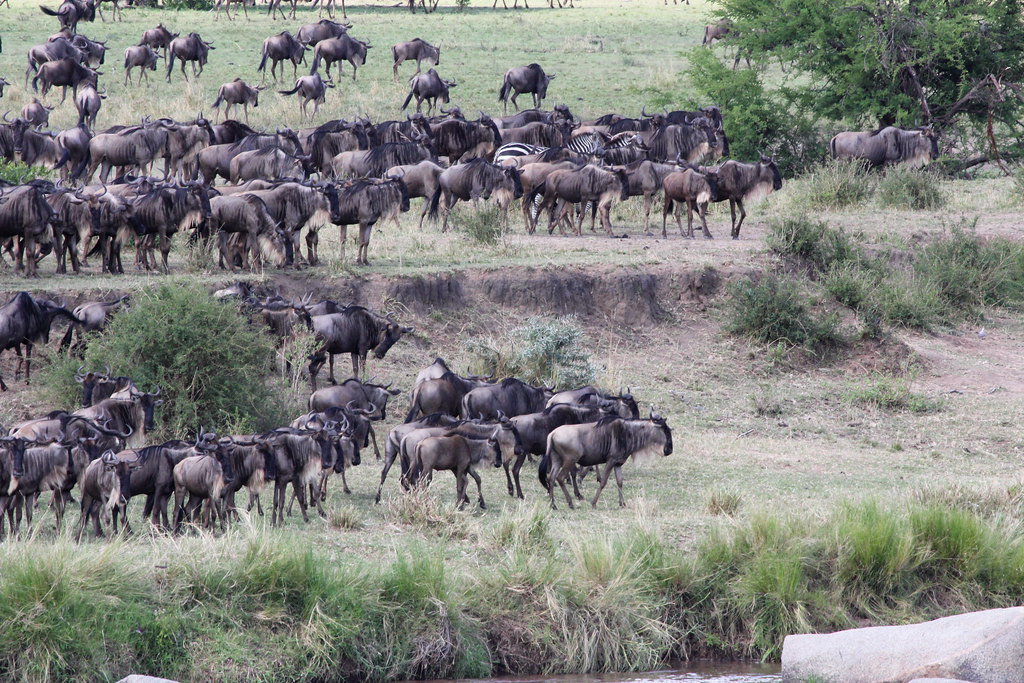When animals or people move from one area to another. Usually migration is a response to local food shortage, or other environmental variables.
The term migration is used for both animal and human migration.
Animal migration is usually a movement to a new area followed by a return to the starting point, but it may also be a more permanent move. Animals generally migrate to find new feeding or breeding grounds. Some animals complete a migratory cycle within a year, every year, while others only migrate in response to environmental changes, or use several years to complete their migration. Animals can travel great distances during these migrations, the Arctic Tern, for example, travels from the Arctic to the Antarctic and back annually.
To find their way animals use a number of cues including landmarks, the stars, the magnetic field of Earth, the position of the Sun, and smell.
Animals know when to migrate by detecting changes in temperature, hours of daylight, availability of food, or other environmental cues.
Human migration is rarely a seasonal cycle of movement, rather human migration is mostly a permanent movement to another place. In addition, humans migrate in other ways and for other reasons than animals. However, environmental changes is also one of the reasons humans migrate.
Global warming can affect both animal and human migration. Climate changes will alter the timing of the seasons, and cause other changes in the environment that will make it necessary for animals to find new areas to live, and adjust migration patterns. In some cases the changes may make conditions more favorable, and, for example, perhaps make migrating to winter feeding grounds unnecessary. In other cases animals may lose important living areas, and become extinct if they cannot adapt by moving into other more suited areas. Local species may also become threatened, when new competing species move into their area.
Similar issues will apply for humans. As global warming will not affect all countries equally, human populations will experience different impacts of climate change. In some areas living conditions will become worse, for example, with more frequent droughts or extreme weather. Other areas on the other hand may actually see an improvement because global warming results in more favorable environmental conditions. These differences could create large scale movement, migration, of people, fleeing from the effects of global warming.
